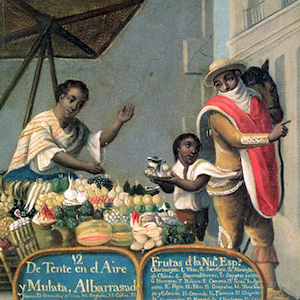Women

Analyzing Literary Sources
The modules in Methods present case studies that demonstrate how scholars interpret different kinds of historical evidence in world history. The video below features writing from a 14th century lai. Lais are short, poetic romances written during the Middle Ages in Western Europe.

Excerpt of Le Fresne
Lais are short, poetic romances written during the Middle Ages in Western Europe. These stories were written and shared orally among nobility. Click on the image of writing to read an excerpt from the lai entitled Le Fresne. You also see an image of the author, Marie de France.

Analyzing Oral Histories
The modules in Methods present case studies that demonstrate how scholars interpret different kinds of historical evidence in world history. This module is based on a series of oral history interviews conducted in the mid-1990s.

Analyzing Inquisition Documents
The modules in Methods present case studies that demonstrate how scholars interpret different kinds of historical evidence in world history..

De Tente en el Aire y Mulata, Albarrasado
This is a painting of a mulata woman selling fruit in New Spain (Mexico). Though there were large numbers of Africans and then Creole blacks and mulattoes in New Spain at this time, little information about them exists.

Analyzing Paintings and Prints
The modules in Methods present case studies that demonstrate how scholars interpret different kinds of historical evidence in world history.

Vulgarly Called the Wanton
This print is called Vulgarly called the Wanton and was created by the artist Utamaro in 1802. It portrays a woman engaged in frivolous or indulgent behavior, providing a sense of how people understood urban Japan during the Tokugawa period.

The Drunkard
This print, titled, The Drunkard, portrays a woman engaged in frivolous or indulgent behavior. It is a ukiyo-e woodblock prints from the Tokugawa or Edo period in Japan (1600 to 1867) created by the artist Utamaro in 1802.

Analyzing Religious Texts
The modules in Methods present case studies that demonstrate how scholars interpret different kinds of historical evidence in world history. In the video below, historian Sumaiya Hamdani analyzes a Hadith. Hadith are reports about what the Prophet Muhammad said or thought.

The Prophet Muhammad and A’isha
This is a depiction of A’isha, one of Muhammad’s wives. She was close to the Prophet and is the author of roughly 1,200 Hadith. Her involvement tells us something about the public role that some women played in the early Muslim community and the respect she was given.